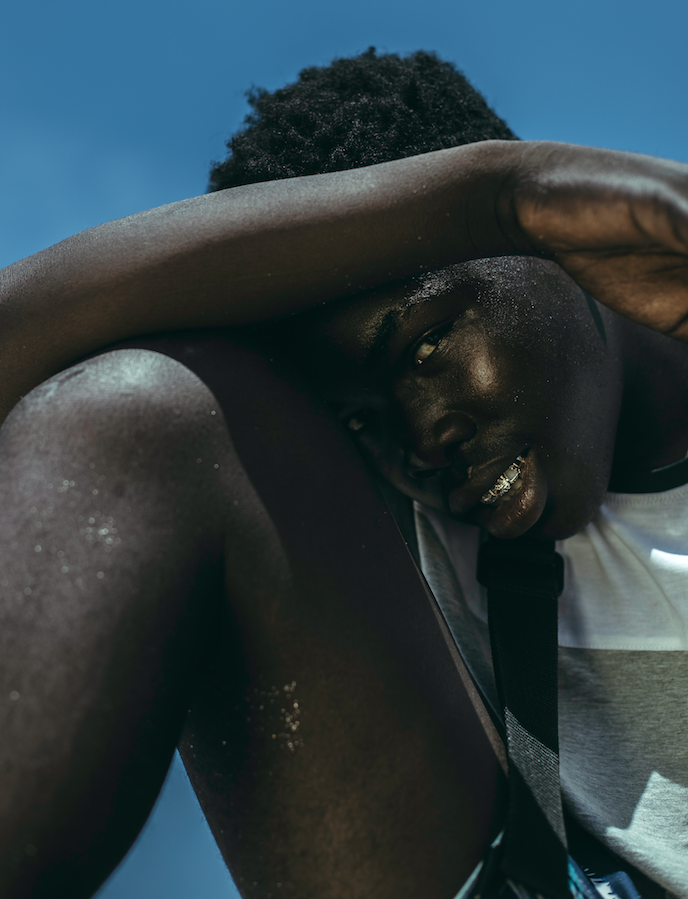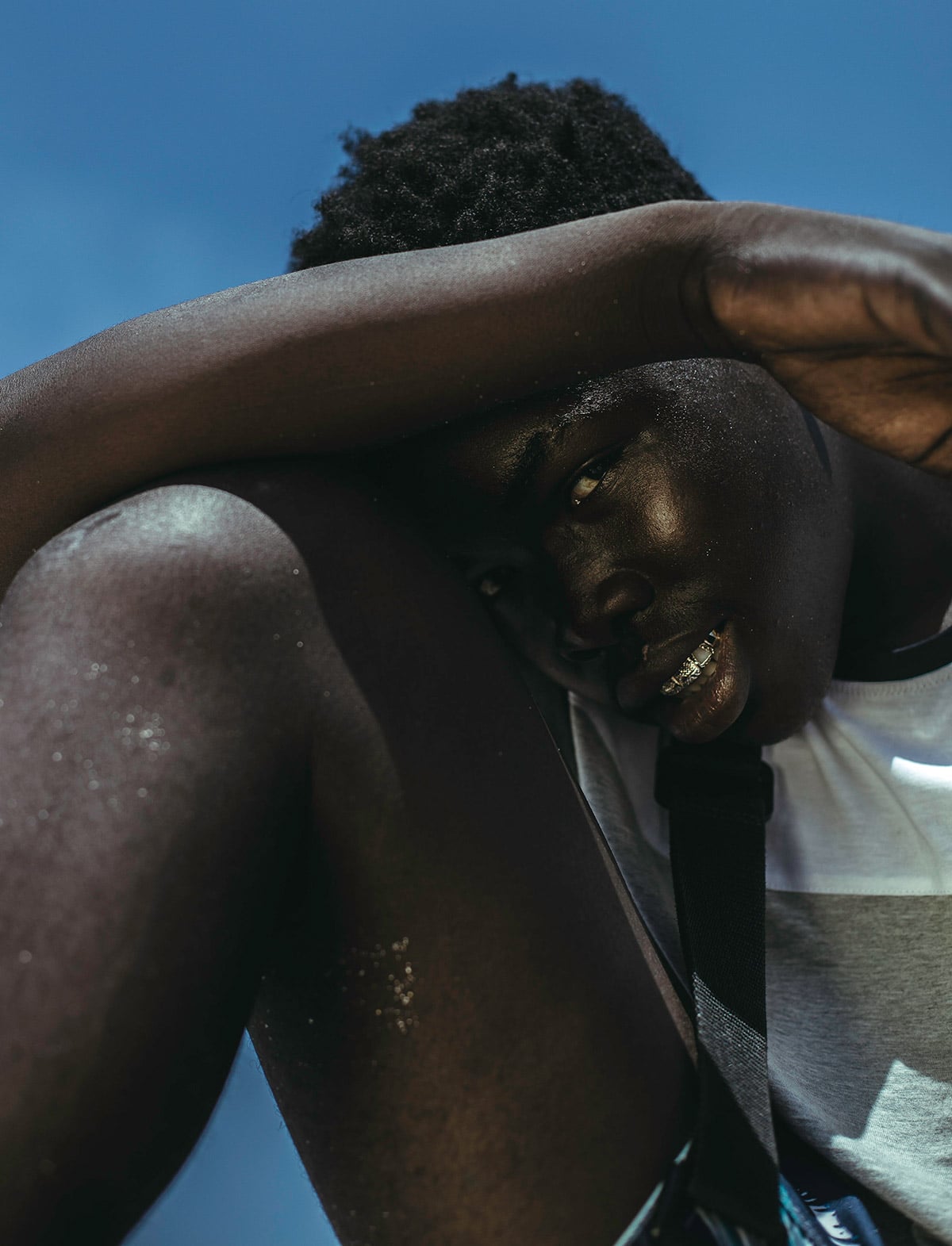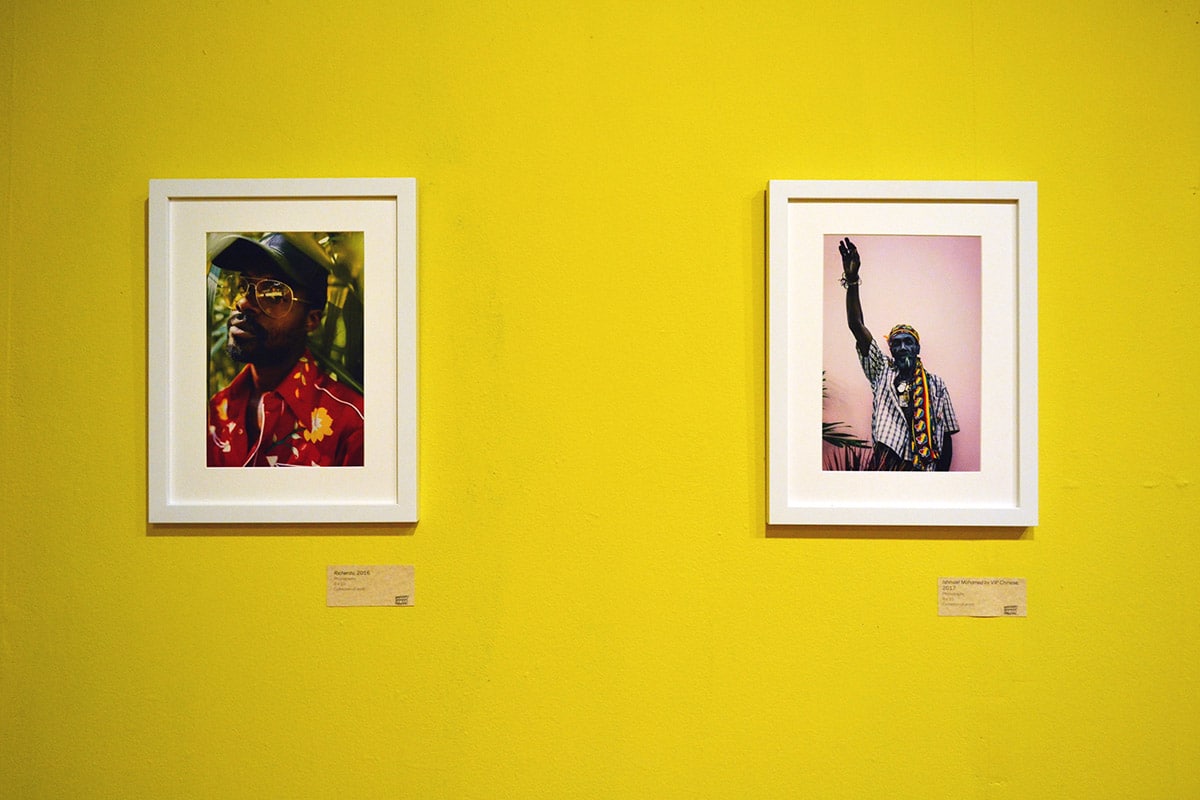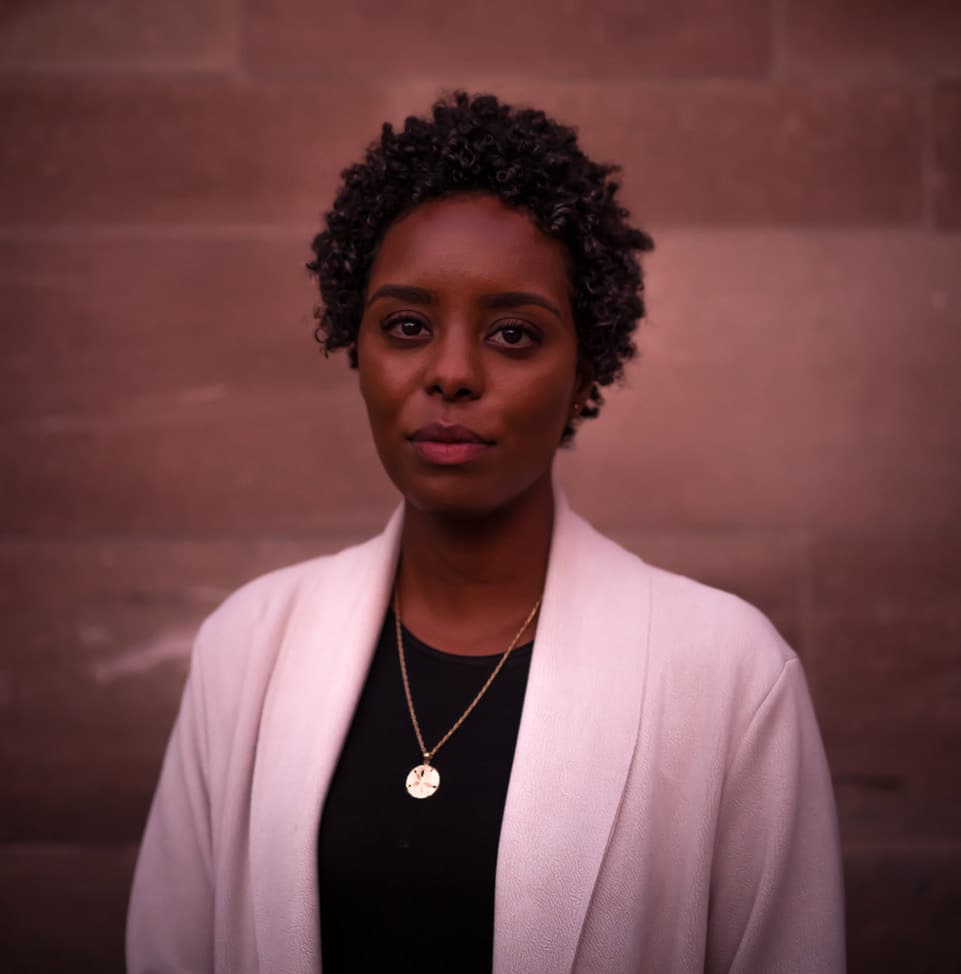
By Natalie Willis
The narrative around Black people is changing. We still see heart-wrenching news of those being cut down for stereotypes, but these images are changing on screens before us just a little bit every day. The #carefreeblackboy movement – which encompasses a shift away from those things deemed ‘taboo’ for Black men for so long – is helping us alter these images of violence and hardness just a little. The more we work to add in positive images to the slew of toxic masculine ideas that get reinforced, day in and day out, by the news and much of the media, thebetter chance we stand of doing better by our men, and helping them do better by themselves.

“Anderson” 2017, Melissa Alcena, Photography, 20 x 24. Collection of the artist.
First, was the overwhelming success of the film “Moonlight” in 2016 (written and directed by Barry Jenkins and based on Tarell Alvin McCraney’s unpublished semi-autobiographical play “In Moonlight Black Boys Look Blue”) and the tenderness, vulnerability and intimacy between men – both romantically and in platonic, mentoring relationships – that was largely unprecedented, and paved the way for this reshaping of masculinity of Black men we are seeing today in many circles. The fact that this film—with Black actors known and unknown alike (we all know that representation to be an issue)—manages to show Black men on screen as we have never seen them before, highlighted the inherent racism in the film industry, a fact that is as criminal as the stereotype so often forced on them.
Melissa Alcena’s solo show currently on view in the Project Space through December 3rd, “Some (Re)assembly Required,” speaks to this puzzle-piecing together and rebuilding and reclaiming of the chunks of softness that has been chipped away from Black men for so long.
Alcena works with a very people-centred, trust-in-the-serendipitous approach to her photography. “Honestly, it’s a very organic process. I’m just living and existing and I stumble across someone who I resonate with, on whatever kind of level that may be, and I approach them and ask to take their photo.” Sounds simple, but it’s never quite that easy. As a young woman approaching men who are complete strangers to her in a public space, where so often she should be the one being approached, this context begins to complicate things just a tad.

Installation shot of “Some (Re)assembly Required”, a solo exhibition of portraiture by Melissa Alcena.
It takes a lot of guts as a woman in this day and age to approach strange men on her own, but she seems largely unphased by this. “That’s what I have going for me. Because when you come up to a guy as a woman and you look in their eyes and tell them that you want to take their picture and you’re not hitting on them, they actually break down a bit, they’re genuinely flattered. Men are not generally used to being approached and flattered in that way, they usually see themselves as the ones taking the risks – and more often than not they don’t approach you the right way themselves, in my opinion.”
Being behind the camera alters your subject’s reality of a situation, because they are so aware they are being watched, though they are often told to ‘act naturally’. They think they have to perform as themselves for the camera, but when the person behind the lens is kind and considerate to them, especially as men, it throws it all off. “They can’t lie to me and they know it. You can always put on a facade, but the minute the camera is actually in front of you – you see this realisation on their faces, with everyone I photograph – that they think “I am being judged, I am being watched, I am being looked at”. The camera is an interesting thing because you are blatantly staring at a person, they don’t know what you’re looking at, they’re wondering where your gaze is and feeling uncomfortable, there’s a power to that.”
It isn’t a sadism so much as a matter of spinning things on their head. We are so used to the impact of the male gaze (particularly the White male gaze) on women, it shapes our magazines and media and has moulded much of how we have viewed women for centuries. So then, for Alcena to be the one behind the camera rather than in front of it–and to be a woman of colour doing so–plays with all kinds of established power constructs.
It feels like liberation and empowerment to hear her speak of the intimacy of taking a stranger’s portrait, even if it is in public. “It is, and I like that power. I enjoy that. I like being able to photograph a person and either uplift them (because that’s always my aim) and watch when they first break the walls down. They have to trust in me that I am going to make them feel comfortable enough, so I employ a bit of psychology there, so that I’m not quite freaking them out.”

Portrait of the photographer, Melissa Alcena. Image courtesy of the artist.
And, boy, aren’t there a lot of walls to break down.? The Black feminist writer and general living legend that is bell hooks, perhaps said it best: “Whether in an actual prison or not, practically every black male in the United States has been forced at some point in his life to hold back the self he wants to express, to repress and contain for fear of being attacked, slaughtered, destroyed. Black males often exist in a prison of the mind unable to find their way out”. (“We Real Cool: Black men and masculinity”, 2004)
This is precisely why adequate, nuanced representation is so vitally important. When you see people who look like you, in any variety of situations and circumstances, it’s important for how you begin to envision and perform your own sense of self, and this is part of the mandate for Alcena’s series of work on display. “When it comes to the array of Black men, that [nuance] is definitely a necessity, it’s the purpose of this work for me. There just isn’t enough positive imagery of Black men, or even imagery showing a wide variety of their experience that exists beyond blatant, overly simple stereotypes.”
She speaks of the power of photography and the image, the way our world is built upon this and we feel it now more than ever in this digital age of a rapid influx of images and data. “We see it [violence against Black people] happening and we still don’t do anything, we don’t change the image, so it becomes “okay” and accepted. We are so close to the U.S. that we can’t escape that influence, it trickles down into our society, we still profile people around us on the street. It’s been passed on from years and years and years… but if imagery is the issue, then it can be part of the solution too.” Hear, hear.
Judging from the softness and unabashed beauty in the images, the way she uplifts these men, you wouldn’t automatically expect her to be the rebel with an agenda, but she is and it’s welcome. “I feel like taking more photos of people and just exposing them visibly to more people is a way to almost re-program the way we see them. We never affiliate Black men with softness. They were not considered to be human beings for a very long stretch of time. You’re either superhuman, or you’re an animal, or hypersexualised. You’re something to be feared, or something to be controlled. So the softness in the images is a necessity. I don’t know if its to do with the way I approach them and what I put in, and that they’re just giving that back to me. That idea has something to say though, what you present to a person is how they’re going to respond.”
This is, of course, not to say that there weren’t some difficulties, but even with difficult characters she has a deep level of empathy and understanding. “He [Thomas, one of the men she photographed] was difficult because he was insecure, and that’s what he’s learned. If he doesn’t know how to control a situation he tries to control the person. And I had to essentially tell him “You don’t need to put on this facade, there’s no one paying attention to you right now, no one is looking, just relax” and he finally stopped trying to hit on me and he just allowed himself to be, for just a few moments. After the photo he started back up again, but that was his mechanism, his protection, that’s what he knows.”
To see this array of soft, strong, sometimes androgynous, sometimes flamboyant, sometimes pared-back images, and to hear Alcena speak to the work herself, please stop by the NAGB on Saturday, November 4th from 5:00pm to 7:00pm for an Artist Talk and Open Studio on this very compassionate set of work. “Some Re(assembly) Required”, will be on view in the Project Space Room at The National Art Gallery of The Bahamas through Sunday, December 3rd, 2017.